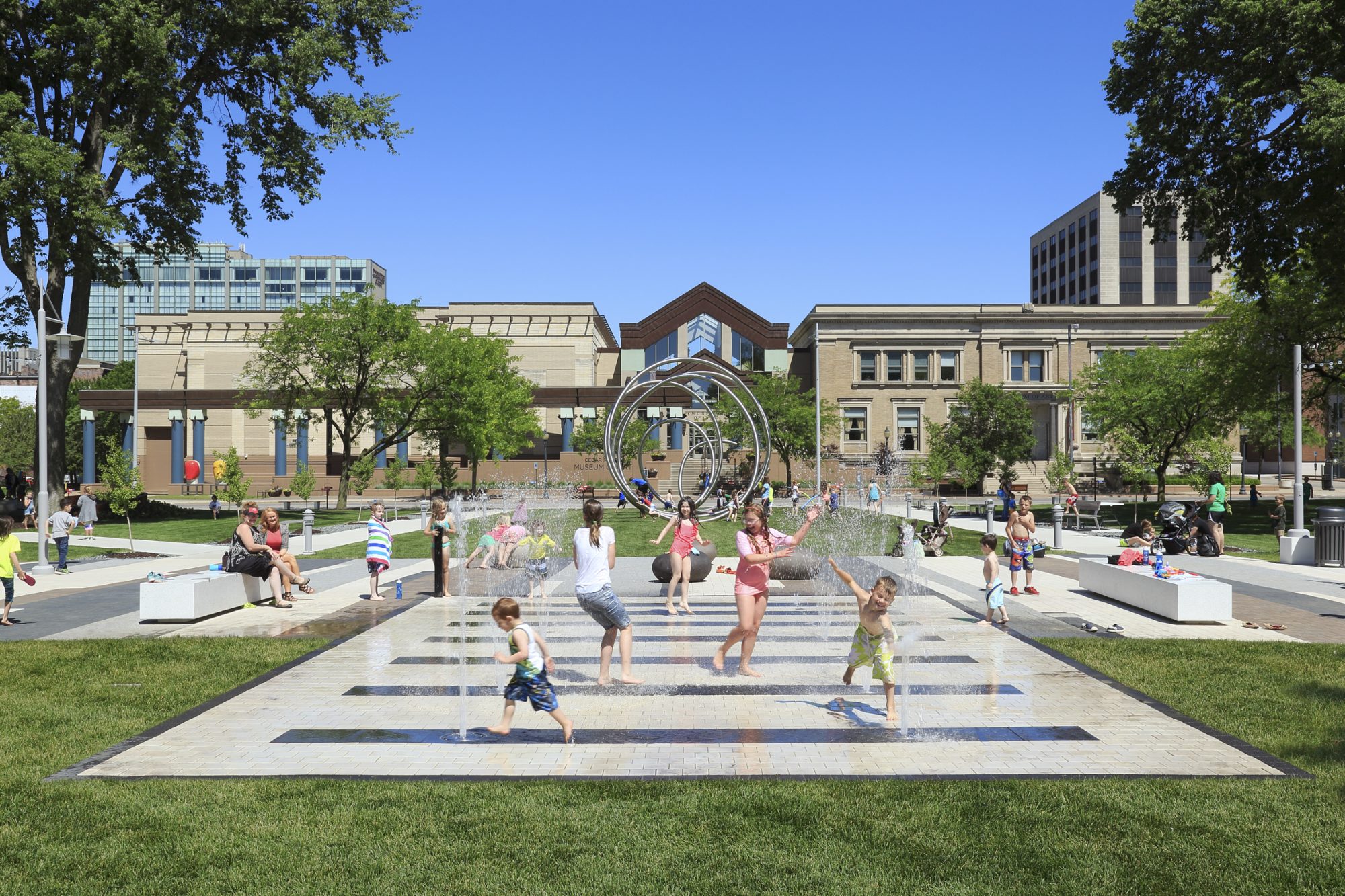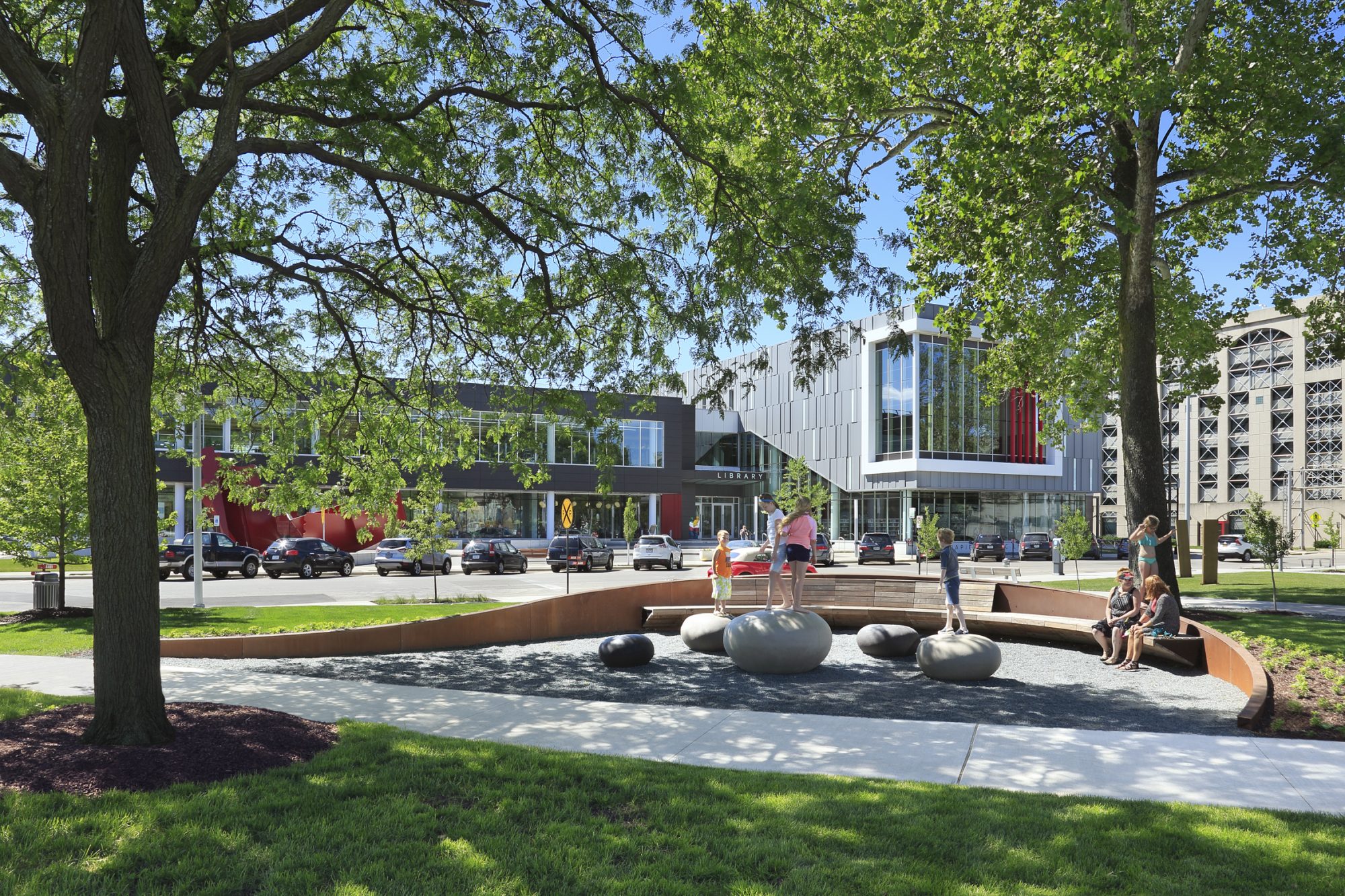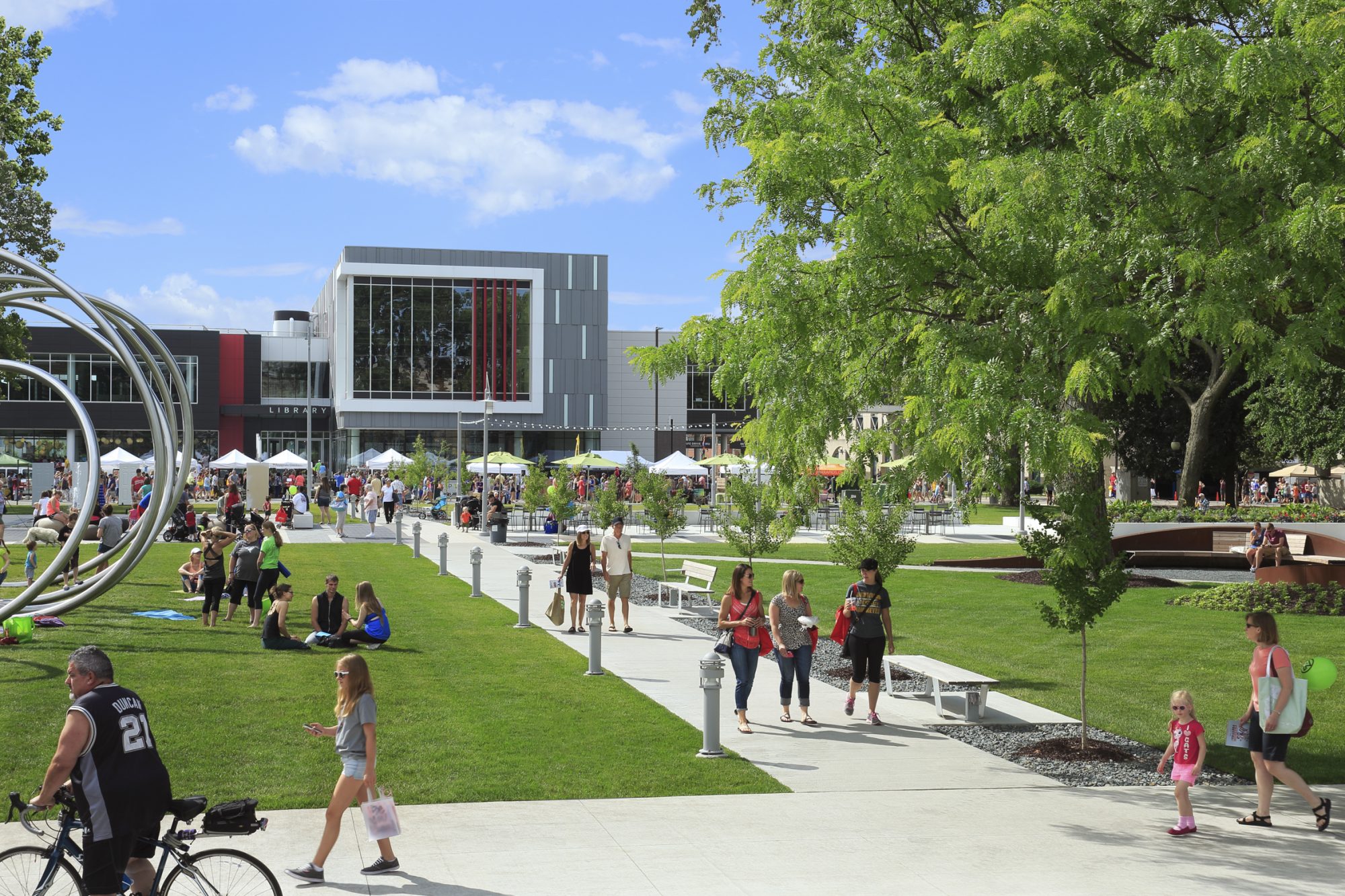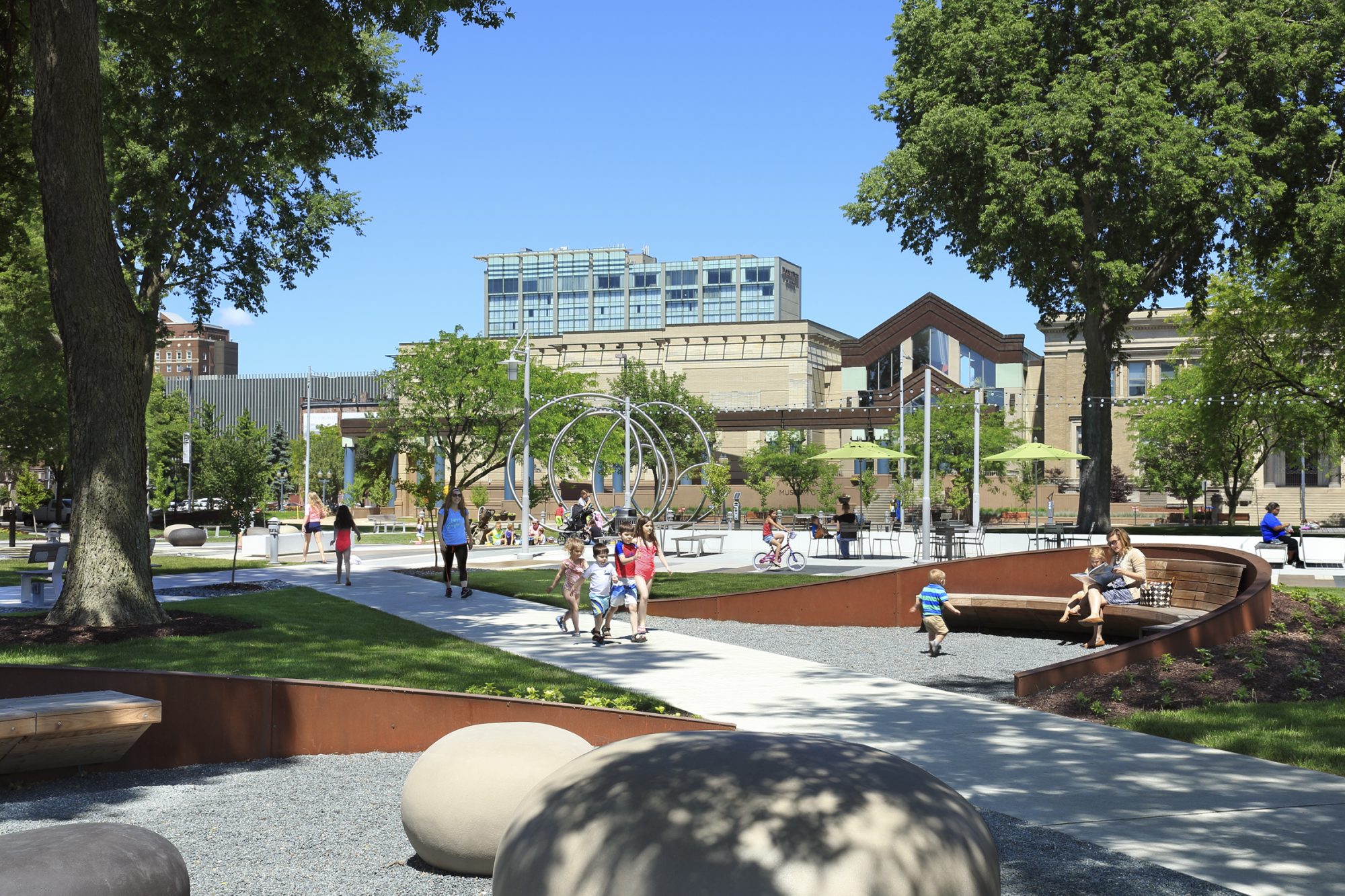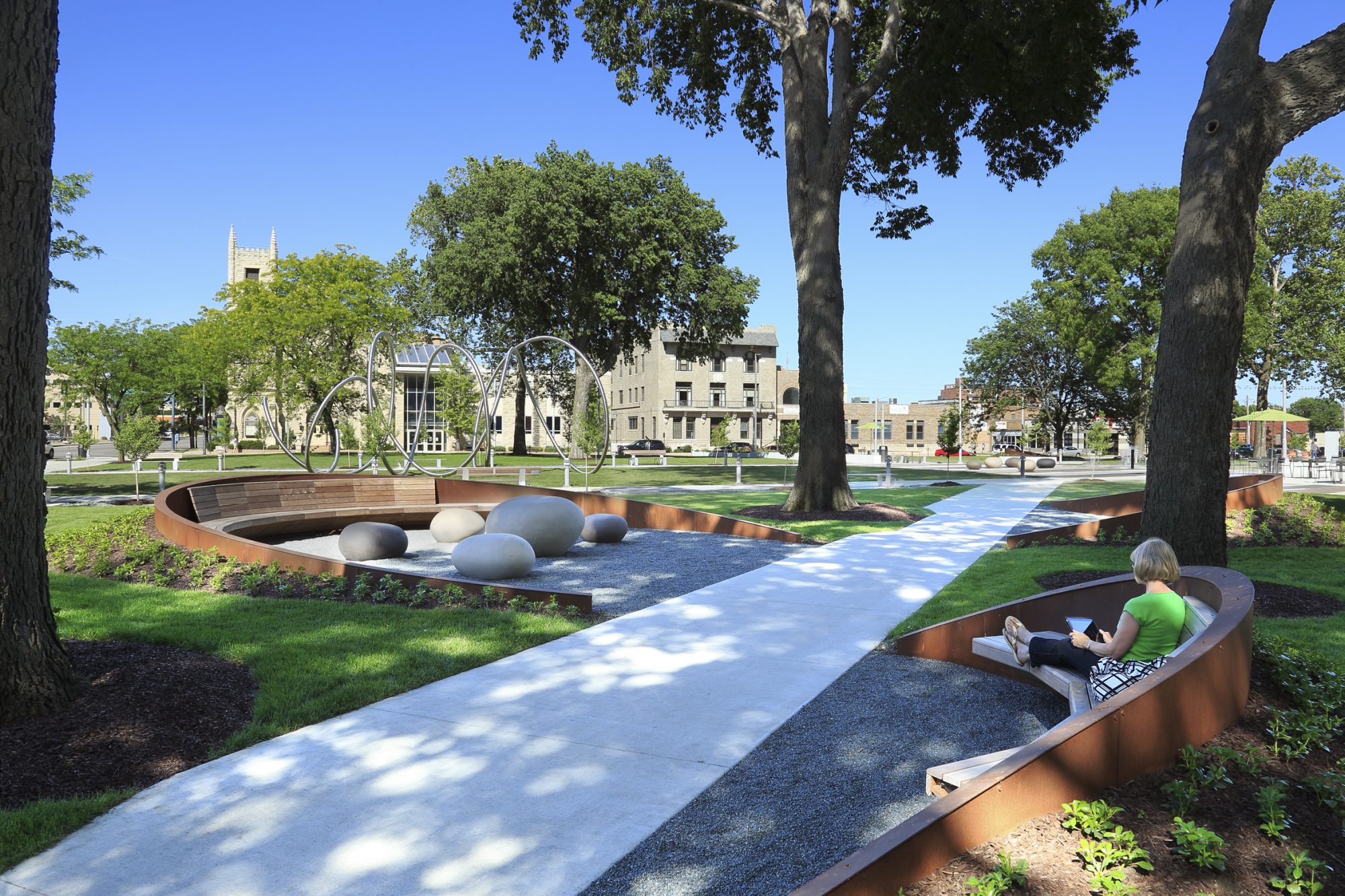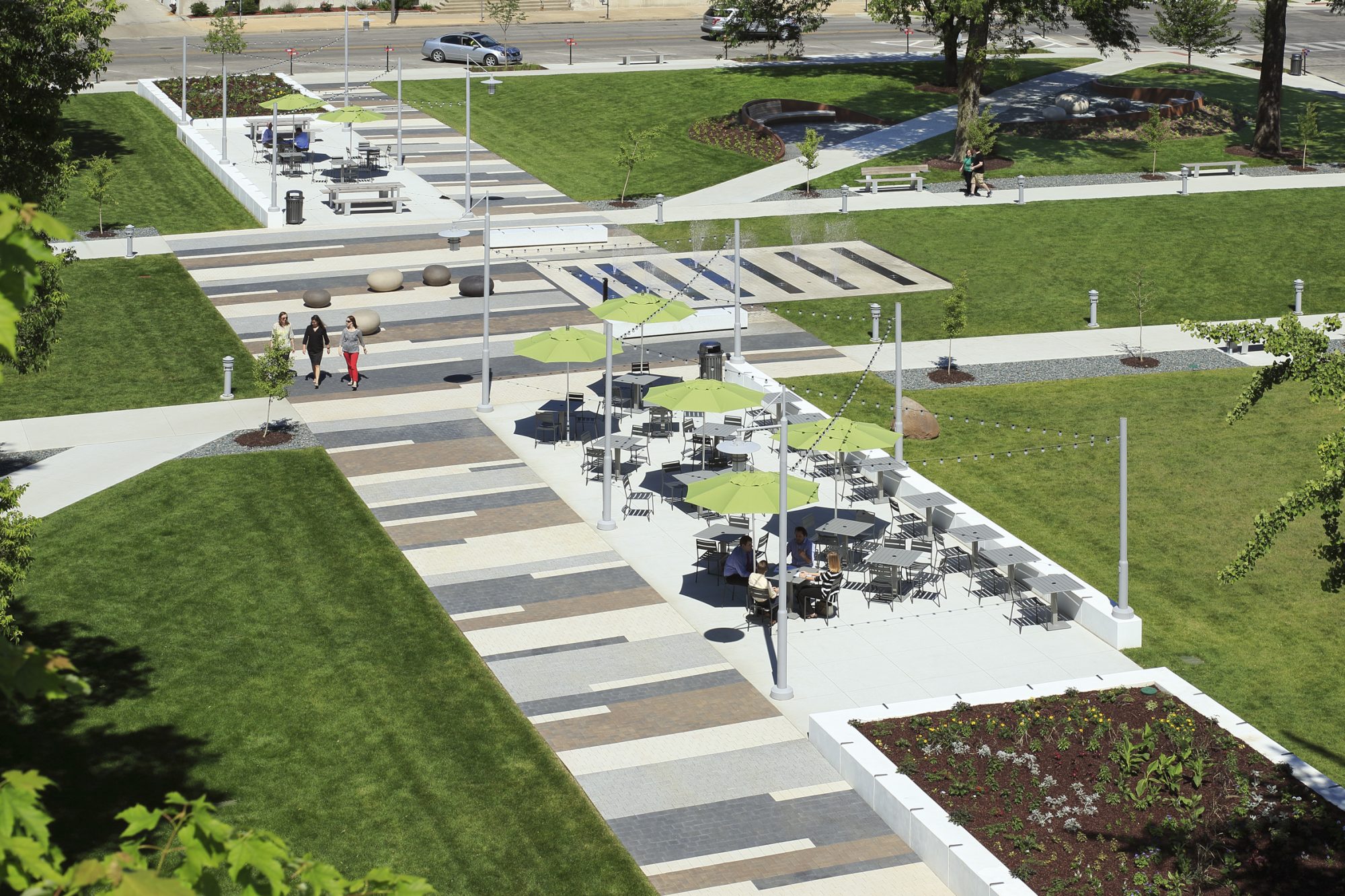Greene Square
A $1.9 million restoration has brought new life to Greene Square in downtown Cedar Rapids. For decades, the city’s sole downtown park was in need of a facelift: Large concrete planters along Fourth Avenue served as a barricade rather than a connection between two of the city’s most prominent civic institutions — the art museum and public library — and the large open lawn areas offered little more than a few scattered tables.
Post renovation, the park is a flexible green space well-suited for gatherings and events of all types and sizes with pathways and seating, a major art installation, and an interactive water feature. Inspired by parks such as Chicago’s Lakeshore East Park, Iowa City’s Pedestrian Mall, Des Moines’ Pappajohn Sculpture Garden, and St. Louis’ Gateway Mall, the design team’s goal was to bring urban sophistication to the space while honoring the park’s history.
An axial lawn flanked by a pair of walkways and anchored by 40-foot-long, 26-foot-wide, 20-foot-tall, coil-like sculpture of brushed stainless steel — called Rollic — by sculptor Bruce Beasley of Oakland, Calif., visually connects the park to the two community institutions to its north and south. The Cedar Rapids Museum of Art, the façade of which was updated by OPN in 2014, faces the park from Fourth Avenue. Patrons at the Cedar Rapids Public Library, an award-winning design also by OPN, will look to the park from the south on Fifth Avenue.
Originally platted along with the city’s streets in 1843, the park is named for one of the city’s founding fathers Judge George Greene. The park’s history and context offered a muse for design elements. A single diagonal pathway that has been part of the park since the beginning was retained, in part because it was once the main arterial route from the residential areas to the south and east and the train depot to the west.
The park’s vicinity to the former train depot sparked other aspects of the design concept: The water feature’s design is reminiscent of a railroad track. Contrasting granite pavers create the railroad ties and a line of fountain heads mark the tracks. The idea for five curved seat walls fabricated with weathering steel and Ipe lumber, chosen for their durability and aesthetic, came from historical accounts of politicians using the park as a place to stump years ago. Today, they offer a place for a more relaxing repose along the historically significant diagonal walk through the park. Groundcover-planted berms create the sense that the benches are one with their setting and offer a slight topographical detail to the mostly flat park. The curving seat walls and the pervious paving beneath them were designed around the existing 100-year-old trees to take advantage of their shade without impacting the root zones.
A whimsical, modern feel is manifested in randomly patterned pavers, rust-colored steel benches, and the large, multihued fabricated boulders intended for sitting and climbing. The entire park is now more welcoming and universally designed, with seating available — in the café patio with flexible furniture, on various benches, seatwalls, and the edges of two large concrete planters. Free Wi-Fi encourages patrons to use the park to work, meet, or take a break.
Designed for events, the patio furniture can be removed for formal events such as weddings. Electrical outlets are strategically located by benches for patron use as well as lighting displays. There’s also a permanent stand and electricity in the center of the axial lawn directly across the street from the library’s main entrance where the community’s holiday tree is placed each season.
